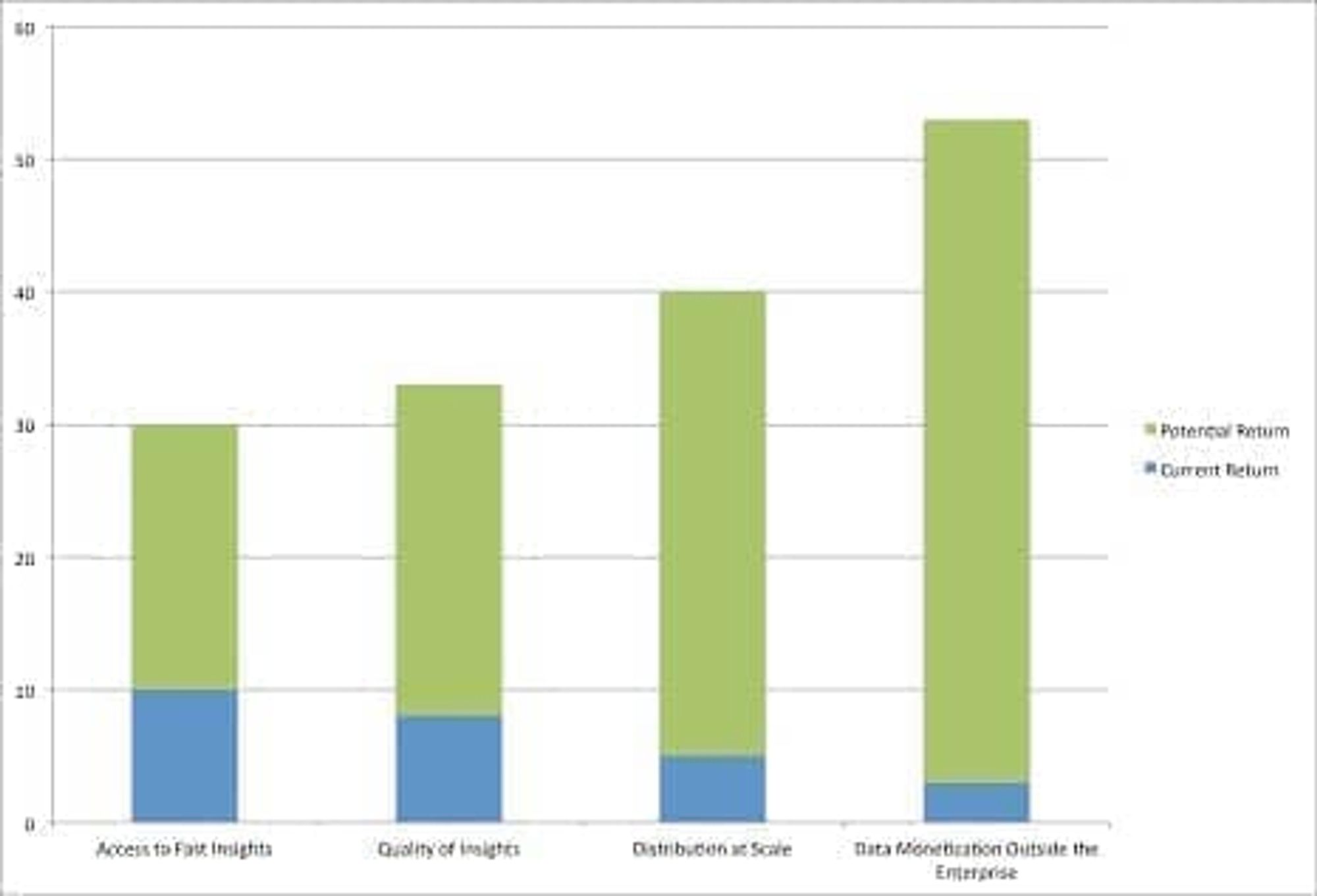Operational Insights--How Successful Is Your BI?
Written by GoodData Author |

Finding the ROI of an organization’s analytic-based investments and understanding the concept of operational intelligence is the key to success within a BI system. Organizations are beginning to realize this as they continue to make investments in analytics to meet the growing demands of the user community for more robust and usable analytic solutions.
In analyzing case studies on analytics, industry research has found the average returns from analytics have been increasing, reaching $13.01 for every dollar spent in 2014 from just $10.66 in 2011. Organizations should take advantage of this increase by implementing insights to gain timely access to information, increase the quality of its decisions with new data sources and become enriched with the right data to suit the company’s specific needs.

Reaching better decisions starts with timely access to information, and because information can lose relevancy quickly, this means that swift distribution of it at scale is a necessity. For example, the value of insights on booking reports decline exponentially with the passage of time. Every organization has some sort of standard reporting method in place, but typically the reports that drive the biggest value combine disparate data sources to produce results. These reports are also typically the ones that take time to collect and validate.
Getting new data sources adds to the quality of the decisions and happens as a business focuses on “asking the right questions.”The common approach is to start with a traditional project mindset. What has changed in the last few years is the myth of the traditional infrastructure that scopes out every data request. The new paradigm is “fast to deploy and adjust” which happens when the build infrastructure is already set to operate at scale. Cloud based solutions are the next generation of accelerating this process, and are the first step in quickly realizing elusive ROI.
The next step in the journey towards successful BI is leveraging the quality of information to make the business unique. When an organization has the tools for operational intelligence and uses them well, its BI can greatly evolve—from seeing why things happened the way they did, to projecting what is likely to happen next. The business formula for ROI of operational intelligence involves analytics and insights that are available to all personnel involved in managing business operations. Organizations should become enriched with the right comparison data that shows relative performance either to prior periods, other groups or some combined intelligence.
The journey continues when organizations and data sources change. Organizations assimilating those successfully make a huge difference to their ROI. In my experience, collecting data usually takes up to 90 percent of an organization’s time, limiting their ability to achieve data enrichment. What has changed in the last few years is that organizations have overcome the problem of connecting data by moving it to cloud vendors. Now they leverage those vendors to provide insights and data enrichment. This does not mean that linkages unique to your organizations can be outsourced, but the “speed of ROI” is fundamentally different in the cloud model.
As such, organizations should consider the following 4 questions when determining whether they have a high-performing and successful BI environment:
1. What sort of ROI can be achieved by increasing operational intelligence?
Operational Intelligence can be leveraged to drive internal business operations and encourage differentiation with customers and partners. Organizations suffer from not being able to distribute operational information in a timely manner. ROI is measured by usage and availability of data within a BI system. Data is being underutilized because it’s losing its relevancy from slow operations.
2. If BI is better utilized, how will it positively impact business performance?
BI is a game changer in driving positive business performance. Usage is the metric that every CFO should review. Not just the usage of information and reports but the extent to which BI is accessed, discussed and debated. A reasonable sample of customers, products or channel data that is relevant and available for a business team to use should be the threshold for “accurate”analysis.
3. Which operations should a business monitor and track to assess analytic success?
Businesses should start by identifying factors that impact operational performance. BI combined with a sound operational process ensures that analytic success is top of mind. What makes modern day BI effective is that when an organization utilizes its BI solutions to track and analyze how well the company is employing analytics in everyday operations, it is practicing “BI on BI.”
4. Which strategic, data-driven projects should be linked to a company’s BI initiative?
Recent research suggests that CRM software systems and customer strategies empower decision makers to better understand, analyze, forecast and impact business performance. These projects strongly benefit from automation and analysis with BI solutions. The more insightful these strategic projects are, the more targeted and efficient BI strategy and operations become.
Organizations are seeing that data needs to be converted to analytics and that is a huge opportunity for new revenue streams. More than 50% of organizations are now beginning to explore how they can monetize these information assets. And, they are wrestling with the question of ownership at the executive team level. This needs to be a top agenda item for executive teams in today’s digital age.
CFOs are responsible for leveraging every balance sheet asset. However, the use of information assets outside the enterprise is invisible on this balance sheet. By incorporating the right tools and strategies to leverage this data, organizations can achieve sustained competitive advantage.
Reposted with permission from Database Trends and Applications.
Why not try our 30-day free trial?
Fully managed, API-first analytics platform. Get instant access — no installation or credit card required.
Get startedWritten by GoodData Author |
Subscribe to our newsletter
Get your dose of interesting facts on analytics in your inbox every month.
Subscribe